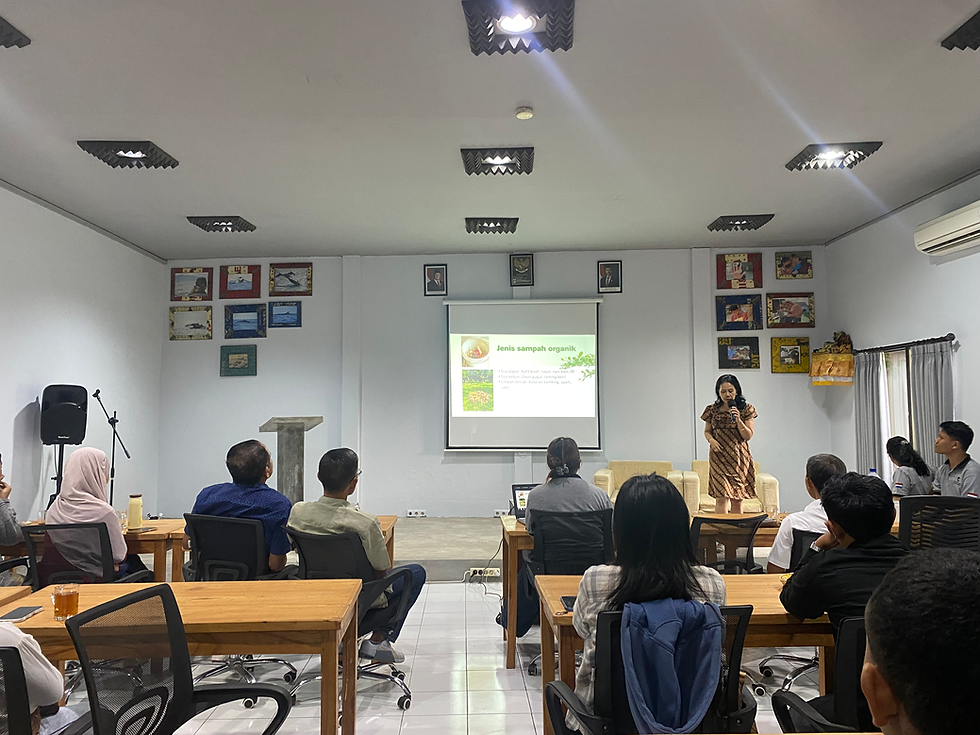DOLPHIN BREEDING CONSIDERATION“COMMON BOTTLENOSE DOLPHIN [Source : Jakarta Animal Aid Network]
- Yayasan WAI

- Aug 15, 2023
- 4 min read

Bottlenose dolphins have emerged as the predominant species of dolphins kept in captivity due to their relatively tractable nature for training, prolonged survival in captive environments, and their visually appealing demeanour. A considerable number, potentially reaching into the thousands, of bottlenose dolphins are being held in captivity across the globe, although obtaining precise figures is challenging. In Indonesia, authorizations for captive facilities are sanctioned with a primary emphasis on conservation and educational objectives.
The Tursiops species/Tursiops sp., which includes the bottlenose dolphin, holds a protected status, though it is not currently classified as endangered. As a result, the argument against ex-situ breeding to safeguard the species gains traction. Even for species in peril, the rationale for breeding in captivity remains questionable, as natural breeding within in-situ populations bears more significant ecological value. This process typically yields higher reproduction rates, diminished infant mortality, and mitigated risks of inbreeding, as opposed to the challenges posed by ex-situ breeding initiatives.
A crucial aspect leading to the reluctance of reintroducing captive-born dolphins into the wild pertains to their inability to acquire and uphold essential survival skills and social norms pertinent to wild environments. Given that these skills and norms are usually transmitted from experienced adults to their offspring, animals born in captivity are often ill-equipped for life in their natural habitats. Consequently, the progeny of captive dolphins tend to face a lifelong existence within captivity, due to their limitations in adapting to the demands of the wild.
According to Daniella Kreb and Putu Mustika from the IUCN Cetacean Advisor Group, as well as Dr. Rodney Westerlaken, M.A., B.Ed from Yayasan Bali Bersih, Drh. Deny Hatief, and Paolo Martelli (a Marine Mammal Veterinarian), there are various perspectives and recommendations concerning the proposal to relocate dolphins from seapens to ponds for the purpose of breeding.
1. Pool Size
Pool size is important to dolphin welfare in captivity. Cetaceans in the wild have individual home ranges that far exceed the capacity of any tank size.
As outlined by the European Association for Aquatic Mammals (EAAM 2019), a fundamental criterion for designing aquatic enclosures is that the pool dimensions must adequately fulfill the requirements for physical exercise, natural behavior engagement, and constructive social interaction of the marine mammals held within. Numerous guidelines currently exist that pertain to the recommended minimum pool size, and these guidelines are informed by specific considerations.
In terms of a general guideline, the size of the pond should ideally be maximized while factoring in both the species' body length and the total number of animals residing in the enclosure. The EAAM's guidance suggests that for up to six bottlenose dolphins, the water's surface area should measure at least 550m², with an additional 75m² for each extra animal. The water depth should not be less than 3.5 meters or should constitute at least 50% of the water's surface area. Moreover, the total water volume must be no less than 2000m³, with a supplementary 300m³ allocated per additional animal.
The EAAM's standard pertains to a configuration accommodating six bottlenose dolphins, and this standard extends to any quantity below the specified six individuals. In essence, this guideline seeks to ensure that the dolphins' living conditions encompass sufficient space to encourage their physical well-being, engagement in natural behaviors, and meaningful social interactions.
2. Dolphin pregnancy
Although no specific measurements are given for pregnant dolphins, it is important to observe the special regulations regarding birthing pools. In the Bahamas there are specific regulations which state, Provides the ability to segregate pregnant sows & birthing pools of size & configuration to facilitate nursing & rearing of puppies (SPAW/RAC 2006). The EAAM (2019) also stipulates that members must provide birthing pools of the size and configuration for the number of bottlenose dolphins 6 7 8 9 10 11 12 water surface 550m² 625m² 700m² 775m² 850m² 925m² 1000m² depth 350cm 350cm 350cm 388cm 425cm 463cm 500cm minimum water volume 2000m³ 2300m³ 2600m³ 2900m³ 3200m³ 3500m³ 3800m³ facilitate grooming, litter rearing and separation from other animals if necessary.
3. Environment in Captivity (Sea Water VS Chlorinated/Salty Pool)
The substance of water for captive dolphins has an impact on the welfare of captive dolphins. ABTA (2013) notes that all efforts should be made to replicate as far as possible the environment that cetaceans would experience in the wild. This is also calculated for the water in which the captive dolphins are located. An alternative is a marine enclosure where the pets can live in natural seawater. A marine enclosure is a fenced or netted portion of open seawater or lagoon, and is generally considered to be better in terms of welfare than a tank. The animals are held in natural seawater, not chemically treated, filtered, and/or artificial seawater. The surrounding environment is often more "natural" or complex and thus more "interesting" to marine mammals than a normally featureless tank. The acoustic characteristics of the enclosure are more natural.
In conclusion, a range of considerations, including breeding methods, pool sizes, and environmental conditions, contribute to the overall welfare and conservation efforts of dolphins in captivity. The collaborative insights from various experts underscore the complexities involved in responsibly managing captive dolphin populations.




Comments